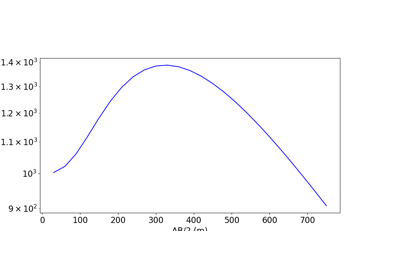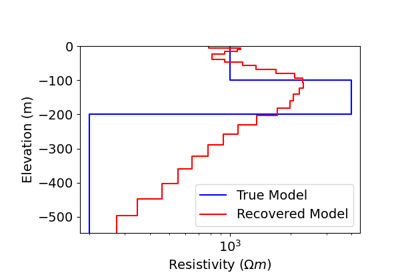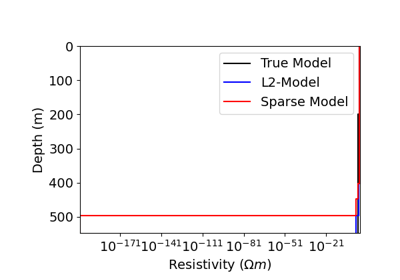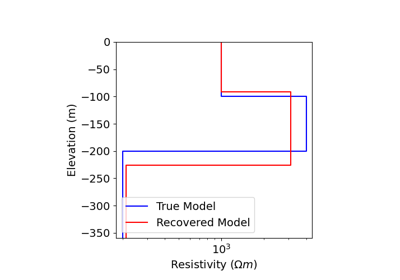SimPEG.electromagnetics.static.resistivity.Simulation1DLayers#
- class SimPEG.electromagnetics.static.resistivity.Simulation1DLayers(survey=None, sigma=None, sigmaMap=None, rho=None, rhoMap=None, thicknesses=None, thicknessesMap=None, storeJ=False, data_type='volt', hankel_pts_per_dec=None, hankel_filter='key_51_2012', fix_Jmatrix=False, **kwargs)[source]#
Bases:
SimPEG.simulation.BaseSimulation1D DC Simulation
Attributes
The type of data observered by the receivers.
A list of properties stored on this object to delete when the model is updated
Electrode separations
Whether to fix the sensitivity matrix between iterations.
number of layers
The hankel filter key.
Number of hankel transform points per decade.
Spatial frequency in Hankel domain np.sqrt(kx*2 + ky**2) = lamda
number of layers
Offset between a current electrode and a potential electrode
Electrical resistivity (ohm m) physical property model.
Derivative of Electrical resistivity (Ohm m) wrt the model.
Mapping of the inversion model to Electrical resistivity (Ohm m).
Electrical conductivity (s/m) physical property model.
Derivative of Electrical conductivity (S/m) wrt the model.
Mapping of the inversion model to Electrical conductivity (S/m).
Whether to store the sensitivity matrix.
The DC survey object.
Thicknesses of the layers physical property model.
Derivative of thicknesses of the layers wrt the model.
Mapping of the inversion model to thicknesses of the layers.
Methods
Jtvec(m, v[, f])Compute adjoint sensitivity matrix (J^T) and vector (v) product.
Jvec(m, v[, f])Compute sensitivity matrix (J) and vector (v) product.
dpred([m, f])Project fields to receiver locations :param Fields u: fields object :rtype: numpy.ndarray :return: data
fields(m)u = fields(m) The field given the model.
getJ(m[, f, factor])Generate Full sensitivity matrix using central difference



